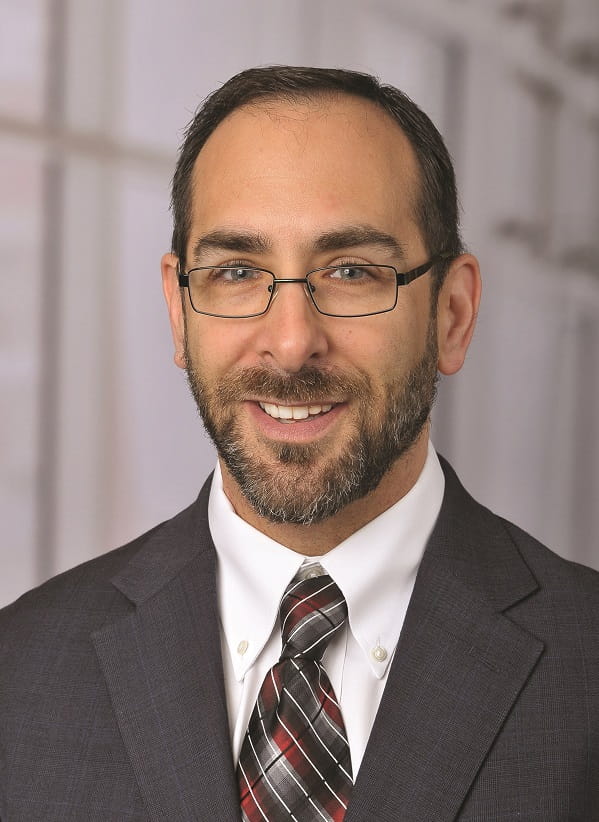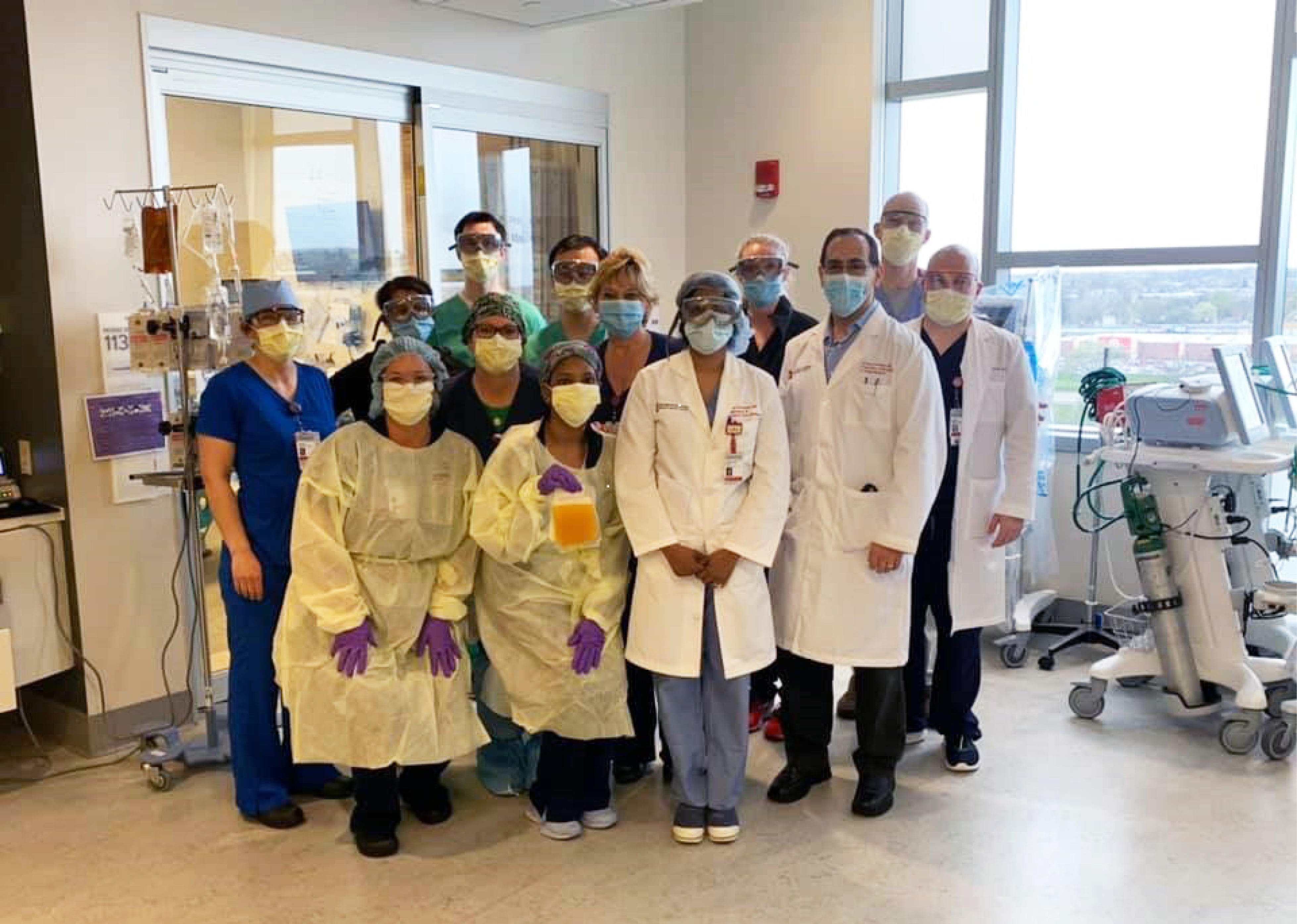Jeffrey Horowitz, MD, ATSF, FCCP, shares his experience as the division director of Pulmonary, Critical Care and Sleep Medicine at The Ohio State University Wexner Medical Center.

April 14, 2020 – At no time in my 20-year career as a pulmonary and critical care physician have I seen so many patients requiring such urgent respiratory attention as during the COVID-19 pandemic. The situation demands that we develop innovative new therapies in record time while caring for record numbers of very sick patients.
In my role as division director of Pulmonary, Critical Care and Sleep Medicine at The Ohio State University Wexner Medical Center, I oversee the medical team responsible for COVID-19 patients suffering severe respiratory failure and requiring life-supportive care. These are the patients who have reached the most critical stage of the illness. In Ohio, this group accounts for 8% of known COVID-19 patients.
As I write this on April 14, we just completed an infusion of convalescent plasma to a critically ill COVID-19 patient. This technique, which has been successful in fighting other viruses, infuses plasma from a person who has recovered from the virus. In this case, the plasma donor was an Ohio State Wexner Medical Center physician who had a mild case of COVID-19.
Ohio State is the first—and so far, only—center in central Ohio to have completed the process necessary to provide this convalescent plasma treatment. This was truly a team effort, led by Dr. Rama Mallampalli, chair of the Department of Internal Medicine, involving more than 20 faculty from multiple departments. This team continues working to offer this treatment to many more patients.
For weeks, we have been preparing for a surge that could bring us 400 new patients, all needing life-supporting care. We have developed an integrated and cohesive plan working with hospital and health system leadership, nursing leadership, and the departments of anesthesiology and surgery.
Beyond our clinical activities, we have continued to advance research in the basic laboratory and clinical realms. Our group has already submitted seven pilot grant proposals for research based on COVID-19. These research proposals are distinct projects, but are also integrated so that there will be an opportunity to bring them together to apply for large research grants from the National Institutes of Health and the U.S. Department of Defense, among others.
In addition, we are aggressively pursuing clinical trials for a variety of potential COVID-19 therapies such as the convalescent plasma treatment discussed above. We anticipate participating as a site for several therapeutic protocols as part of national networks. In parallel, we are considering moving forward with trials involving several novel interventions.
In the midst of COVID-19 research and clinical matters, we are continuing to treat new and established patients. Outpatient operations have transitioned to virtual visits, complete with a video platform to allow face-to-face interactions. We are also rapidly developing a tele-ICU system to allow us to provide consultative care to critically-ill patients in regional hospitals, should the need arise.
I would be remiss if I didn’t highlight the pulmonary and critical care fellows within our division who have been resolute and integral to our activity. These 18 doctors are frequently the first ones directing the care of critically ill patients, and they have all established themselves as the next generation of leaders in our field.
This is a unique and challenging time, and I am fortunate to be part of an extraordinary team. Our physicians, critical care nurses and respiratory therapists have been performing fearlessly and admirably, and we’ve had a number of success stories so far.
I am proud of the teamwork and sacrifice of everyone in our division, proud of how they have stepped forward as leaders dedicated to our mission. We are providing the highest level of care possible while advancing our fundamental understanding of disease pathogenesis and treatment and maintaining our commitment to education and training.
I’ve been here at OSUWMC for just about 100 days, and in the last 50 days I’ve been thankful for the opportunity to lead this elite team. We’re looking forward to establishing the new normal as this public health crisis resolves. I assure you, we’ll be ready for whatever comes next.
Jeffrey C. Horowitz, MD, ATSF, FCCP
Professor of Medicine
Division Director of Pulmonary, Critical Care and Sleep Medicine
The Ohio State University Wexner Medical Center

Specialists at The Ohio State University Wexner Medical Center display a bag of plasma used in the state's first convalescent plasma therapy infusion. The plasma is donated by a person who has recovered from COVID-19 to treat critically-ill patients. Ohio State is the first center in central Ohio to have completed the process necessary to provide this treatment.
How you can help
Donate
Make a gift online and help improve the lives of our patientsGive by Mail
The James/Wexner Medical Center Development Officec/o The OSU Foundation
PO Box 710811
Columbus, OH 43271-0811
